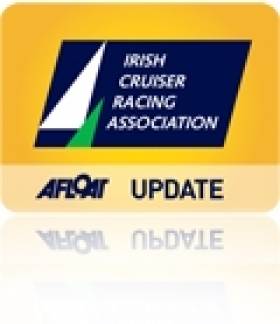Displaying items by tag: John Corby
New Trailerable 30 Footer to be Unveiled at ICRA Conference
Commodore Barry Rose is urging Cruiser Racers fans to support this weekend's eighth annual ICRA conference at the Carrigaline Court hotel in Carragaline, County Cork.
There's a big line up for the one day event that includes a presentation on an innovative concept to develop a 30 Footer one design concept that can also sail under IRC handicap. The idea is that it will be trailerable to attend ICRA Nationals and other events around Ireland. Rory Staunton travels from the UK to make the 30 footer presentation.
Rose says Saturday's event gives an opportunity to exchange 'constructive opinions to promote and develop the cruiser/racing', the biggest sector of Irish Sailing.
The event includes a celebration dinner for the Commodores Cup team at the Royal Cork Yacht Club.
Designers John Corby and Mark Mills will be present to update us on IRC developments and boat design and their thoughts on where boat design is heading. More HERE
Corby and Mills for Cruiser Racer Conference
There is always the chance when you invite two of the world's leading designers that there could be a 'blow the doors off' expose of the IRC handicap rule.....In any event next month's ICRA conference features both John Corby and Mark Mills in the Carrigaline Court hotel on a discussion panel speaking about Ireland's Rolex Commodores Cup win, an exciting topic and one which promises to be well attended. Make sure of your place at the conference. More HERE.






























































